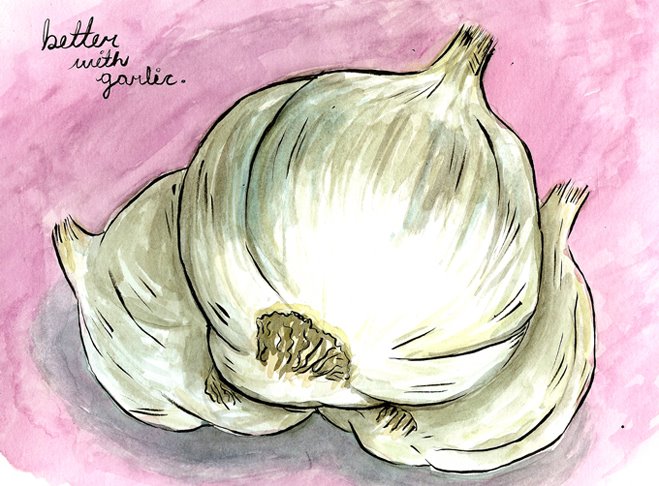I have been a lifelong bagel eater and pretty much a lifelong bagel snob. My folks are from NYC and my grandma still lives in Brooklyn. Every summer when she would come visit us in Alaska, she’d bring along a big box of crunchy, chewy, perfect Brooklyn bagels and bialys. My dad would make lox and we’d have a fantastic spread. The day the last bagel was gone was always a sad one. Years later, my dad took to making bagels, with some helpful hints from a Brooklyn bagel baker (I love alliteration), and they were awesome. So of course before I made these, I called him to let him know I was going to do it. I also let him know that these were a grand part of my Jewish brunch. I think I did him proud. The recipe below is the half recipe, except for the salt and sugar amounts listed as they are primarily for the water bath for the bagels.
Bagels from
Deli:
Makes 8-9 bagels (I got 9)
1 Tb. or 1 package dried yeast
1 c. warm water (100-115 degrees)
3 Tb. kosher salt
3 c. bread flour
4 Tb. sugar
1 egg
Kosher salt
Dried onion
Fresh garlic, chopped
Poppy seeds
Combine the yeast and warm water in a large bowl. Stir with a fork or a small whisk. Add ½ Tb. salt. Stir in all of the flour, one cup at a time. Use a whisk until the mixture becomes stiff, then switch to a wooden spoon. Or use your stand mixer. Whichever.
Use a handful of flour to flour your work surface. Turn the dough out and knead rhythmically and vigorously, add more flour as you knead, until the dough is smooth, springy, nonsticky, and elastic. I did almost all of this in my Kitchenaid, turning it out and kneading it by hand at the end, but I just had to post the original instructions because I find them so hilariously in-depth. This dough should be quite stiff. It is kneaded sufficiently when you can pole it with your finger and the indentation springs back. Total kneading time will be 10 to 15 minutes.
Cover the dough with a cloth and let it rest while you wash, dry, and oil the bowl. Knead the dough a few more turns, then form it into a ball and place in the bowl. Turn to coat with oil. Cover the bowl and put it in a warm, draft-free place until it doubles in bulk, about 1 hour. It has risen sufficiently when you can poke a finger in the dough (there’s lots of finger pokin’ in this recipe!) and the hole remains after about 5 minutes. Poke very gently or the dough will collapse.

When doubled, flour your first and punch the dough down. Knead a few times, then allow to rest for a few minutes. Divide the dough into 8-9 equal pieces. As you work with one piece, keep the remainder covered with a kitchen towel. Spread another towel out on a clean work surface. Roll each piece of dough between your hands to form a smooth ball. Flatten slightly and use your thumb to form a hole in the center about 1” in diameter (more pokin’!). Place finished circles on towel-covered surface.
Cover bagels lightly with plastic wrap and let rise for 20 to 30 minutes, until puffy, but not quite doubled. In the meantime, preheat the oven to 450 degrees. Combine 5 quarts of water, the sugar, and the remaining salt. Bring to a boil. Definitely do this right after letting the bagels rise again. It took forever to come to a boil. Have one large or two small baking sheets lightly greased and ready to go.

Adjust the water bath to remain at a gentle boil. Four or five at a time, drop the bagels into the water. Cook for 3 minutes, turn with tongs, and cook for 2 to 3 more minutes on the second side. Remove with a skimmer or slotted spoon, and place briefly back on the towel to drain. Place on baking sheet. The whole process is similar to the one you use to make
pretzels, so I felt very comfortable doing this. It’s really easy anyway.


Beat the egg with 1 tablespoon of water. Brush on the top of each bagel with this mixture, and sprinkle with kosher salt, poppy seeds, or the chopped garlic. Or all of the above. Or none. Or anything else you can think of. I made one salt, two poppy seed, two plain, and four garlic. Bake in preheated oven for 20 to 30 minutes, until golden brown and crusty. Remove from baking sheets and let cool on racks. According to the original recipe, these freeze beautifully, which is something I considered before going for the half recipe.
These were fantastic. Not as crunchy as I would have liked all the way around, but the bottoms were great. The best part, though, is that my dad is going to look this recipe over (he has the same book) and tell me his modifications and secrets. So they’ll be even better next time! These went really well with the next two parts of Jew brunch, which are coming up next, and tomato and sliced red onion. I forgot to get capers (boo on me!). To take out a bit of the bite of the red onion, I soaked them in water briefly.
Anyway, on to the rest of brunch!



.jpg)


































